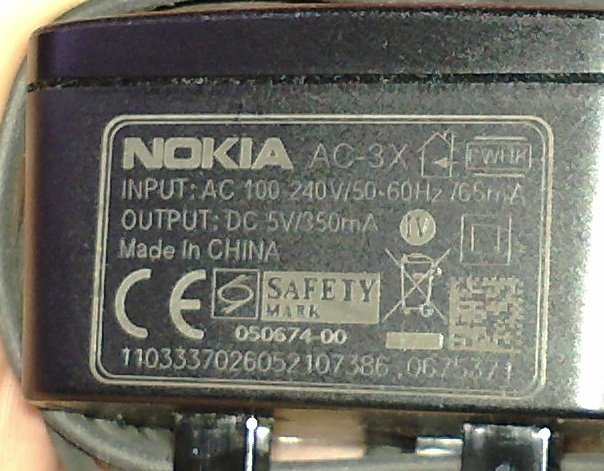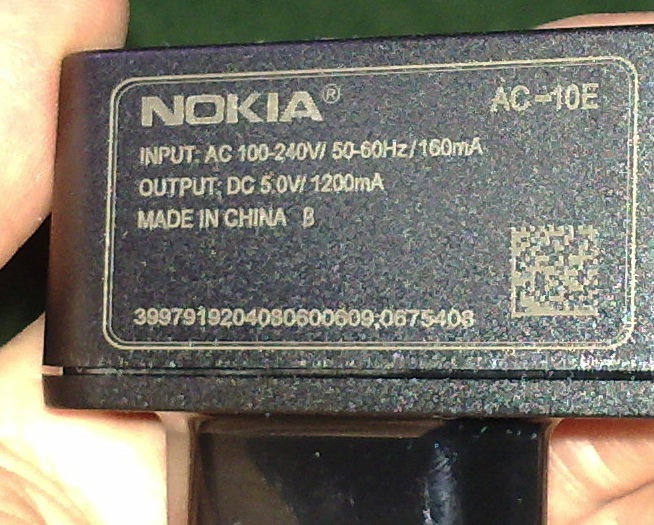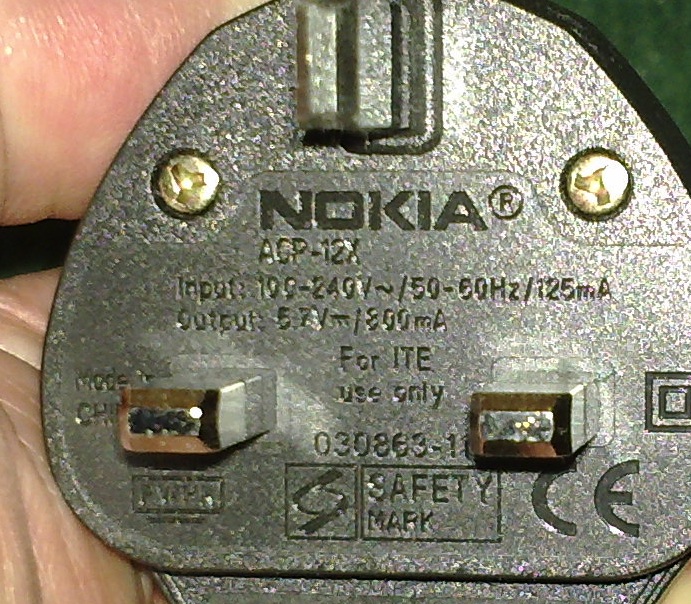Here's the scenario: I had been wondering why all my smartphones kept taking forever to charge, for example four hours. Definitely not right, so I'd been examining the phone batteries, wondering is some of them (I tend to have multiple phones on my desk) were on the way out. All very frustrating - and potentially expensive. I'd also been wondering whether the problem was the microUSB route to charging, given that I'd been trialling the N86 and E75, both of which charge using this method. I could understand slow charging over the USB lead from my Mac, but much of the time I'd been using the 2mm-charging-in-to-microUSB adapter supplied and so the power line should have had the full mains current available.
However, the batteries, adapter and devices weren't the problem. The charger was. And yet it was working perfectly.
The thing to note is that when Nokia (or another manufacturer) says, in its documentation, "Be sure to use the charger supplied", they're not kidding - there really is a match-up between the charger in the box and the needs of the phone. Now, don't take this too far - all Nokia chargers are essentially (more or less) electrically compatible with all phones (physical connectors permitting) and charging will occur - but you have to make sure you're supplying enough milliamps.
For example, I'd been on the hunt for a charger after I last spring cleaned my office - finding this one:

I plugged it in as my main desk charger and thought no more of it. Which is when the slow charging problems started, something I became more and more aware of as I started putting my Nokia N86 to serious, intensive daily use. On closer inspection (see the photo detail above), I had been using a 'AC-3X Travel Charger', rated at only 350mA output. Opening the N86's box, I found this charger:

Look closely. 1200mA, which is what the recently-made N86 expects. And I'd been, effectively, drip-feeding it at a measly 350mA, just over a quarter of the current needed. Fully explaining the charge times of four hours or more (remember that charging isn't strictly linear and that the last 10% or so of charge is 'trickled' in - though I'm ignoring this subtlety for the purposes of this feature).
Interestingly, my older chargers (circa 2006) were rated at a slightly higher voltage:

You see '5.7V' rather than '5V', and I remember that previous generations of S60 phone (6630 vintage) would get quite sniffy about voltages of much less than the full 5.7V - the electronics in the newer devices is much more mature and happier with the standard USB voltage of 5V, so this is where the standard is now drawn. The extra 0.7V doesn't seem to be a problem for the regulating circuits in the newer devices and I've happily charged all my latest Nokia phones from this charger.
By the way, microUSB charging is usually limited to 100mA, as per the USB spec - at which current, charging the aforementioned N86 would take a staggering twelve times as long. Interestingly, applications such as Energy Profiler can show up the actual battery current being drawn by a phone while on but inactive, with currents such as 30 or 40mA being common. Given that charging current transfers aren't 100% efficient and that we can expect a good 30% of the input current to be lost in heat and other inefficiences, you can see that, even with your phone's screen off and nothing running, charging over a microUSB data lead might result in a net charging current of only 30 milliamps - c.f. the original design-intended (optimum) charging current of an Amp or so. A factor of THIRTY different. Something to bear in mind!
In summary then:
- Where possible, use the charger that comes with your phone
- If you insist on using another charger, check the current rating is as close as possible to that of the real thing
- Don't try using a microUSB data cable to charge a phone from scratch - it'll take an eternity! Use microUSB data charging for 'top ups' only
